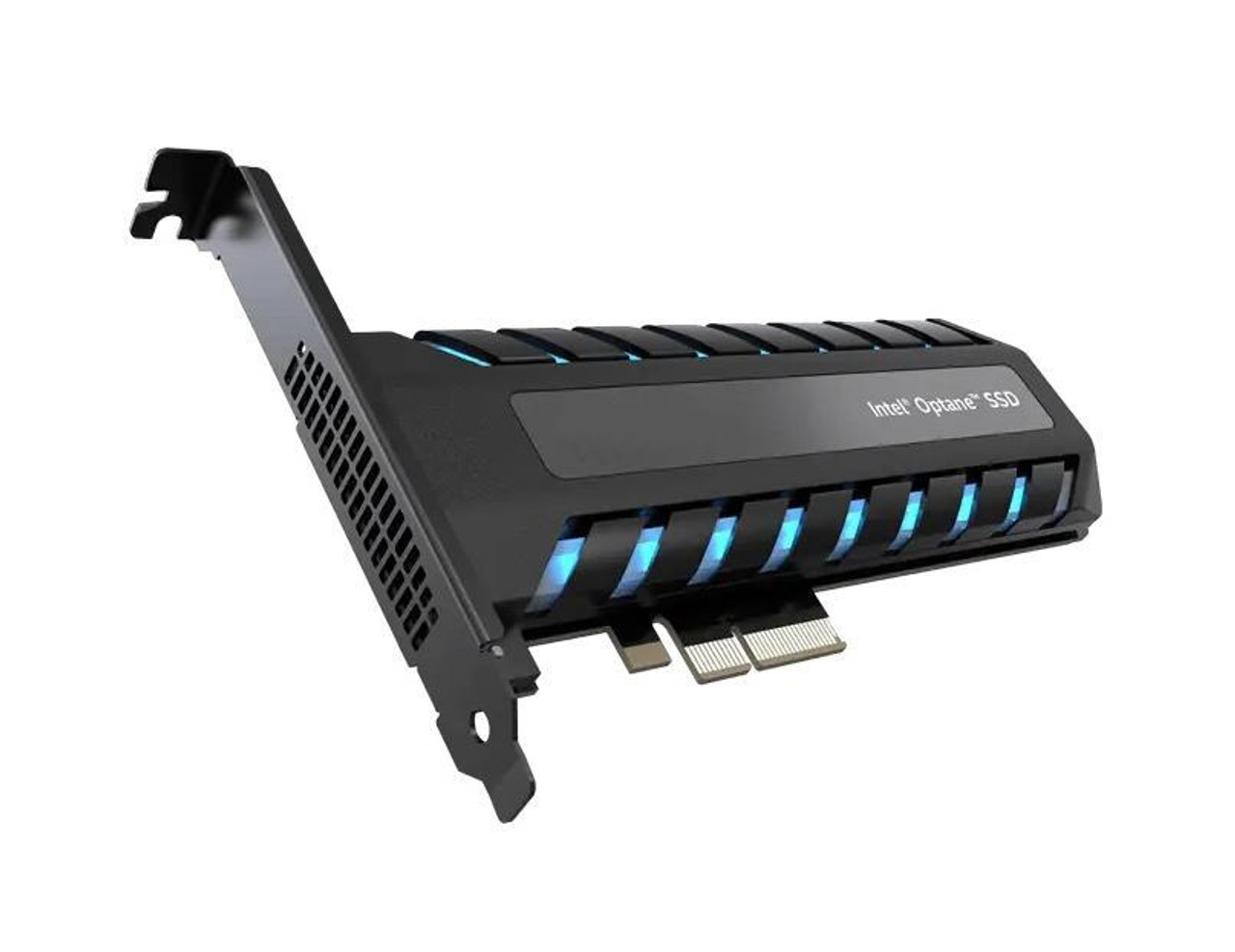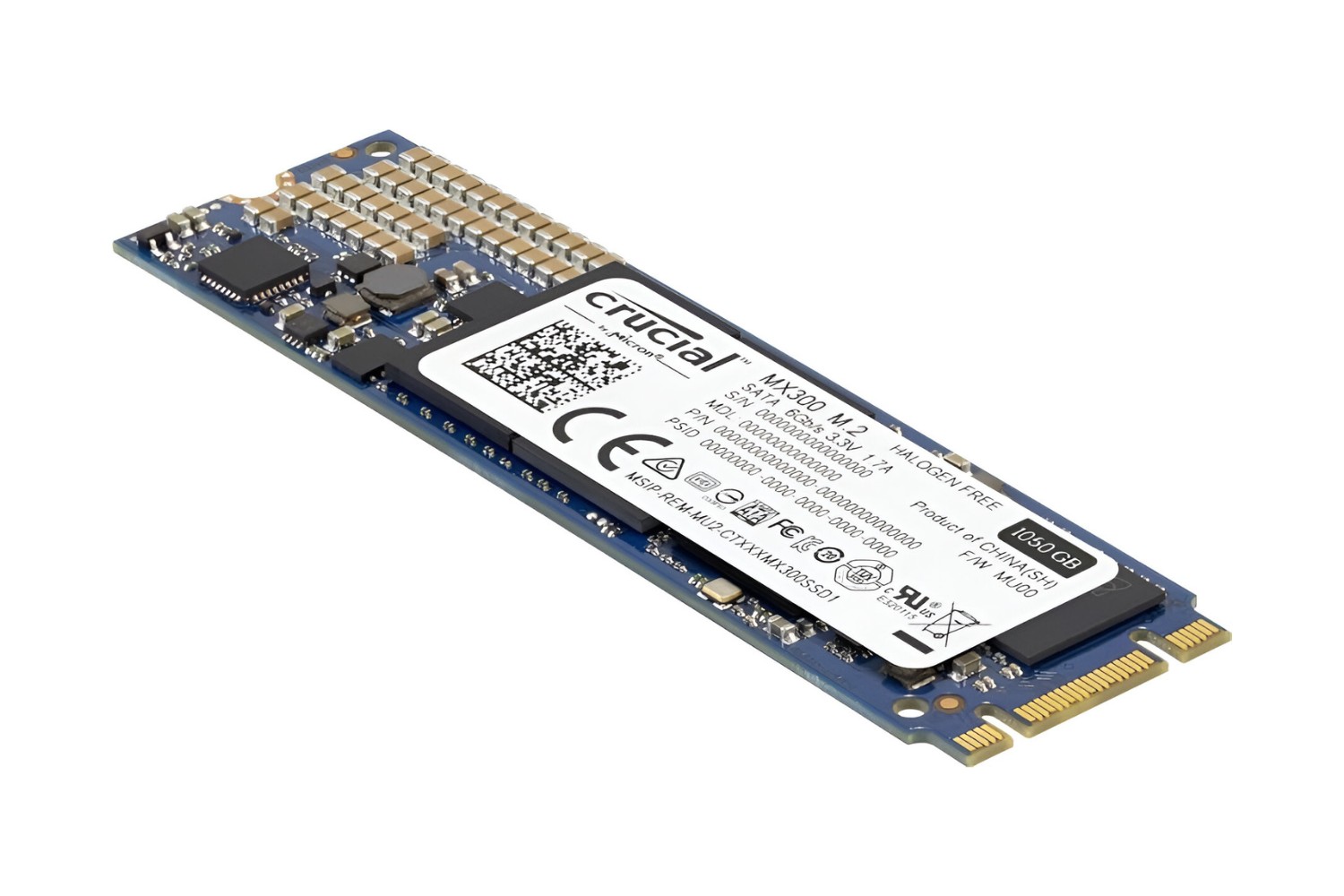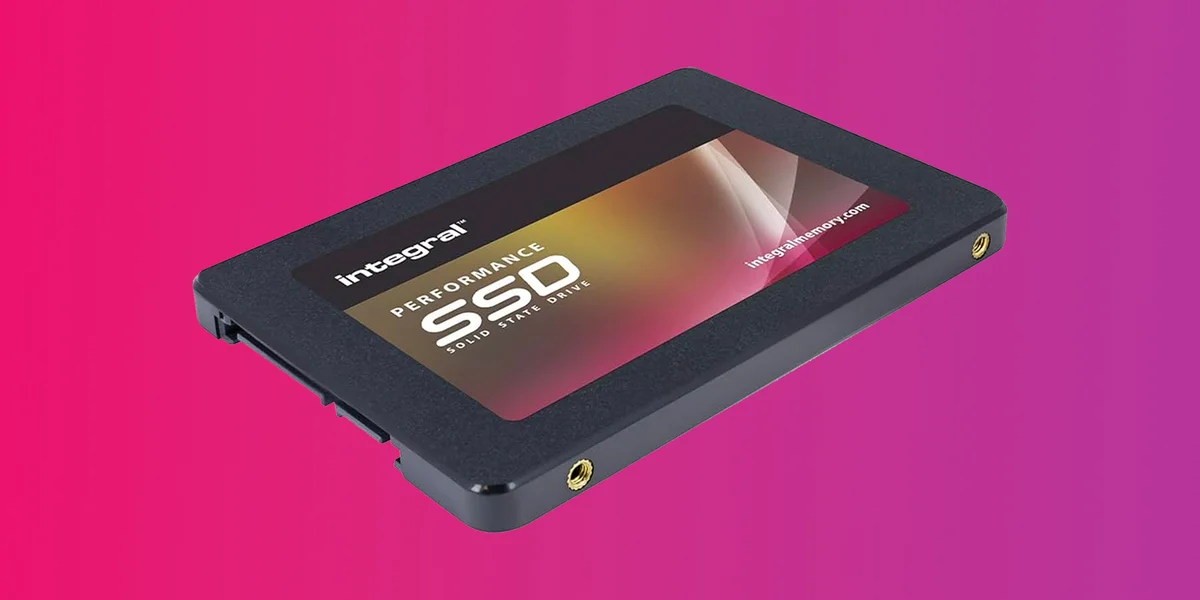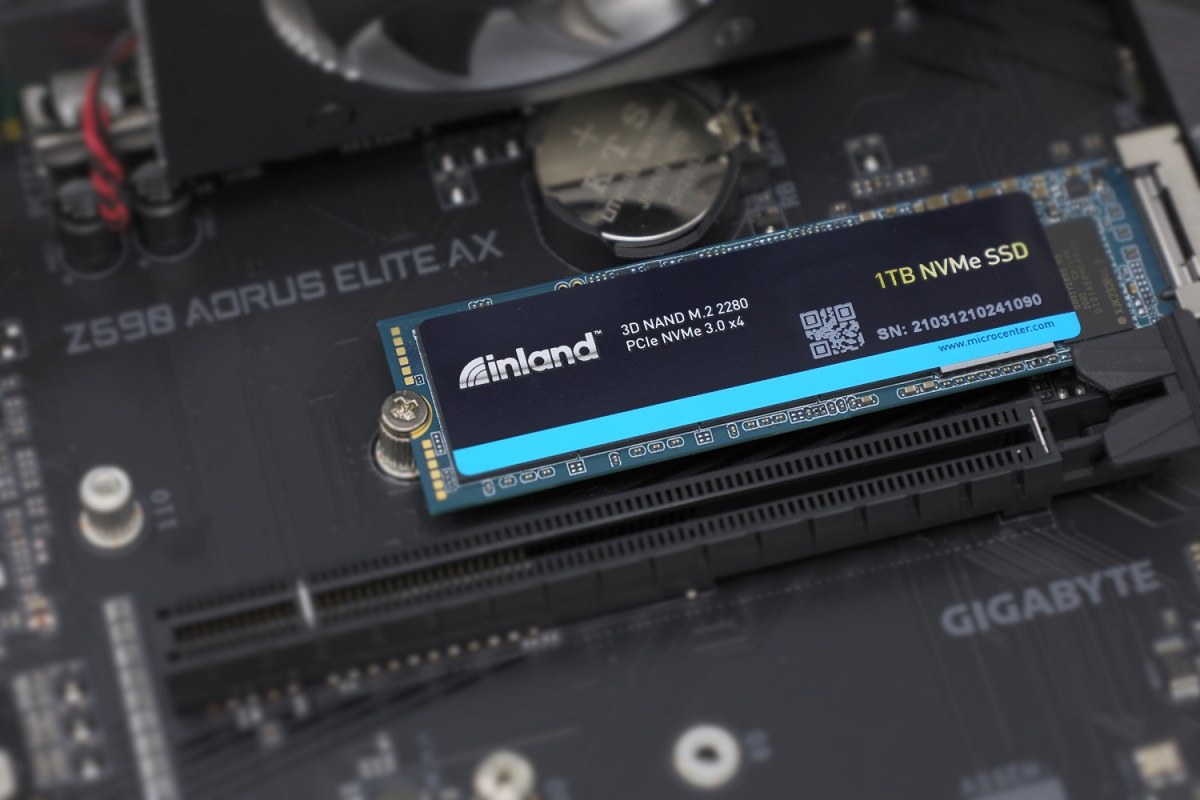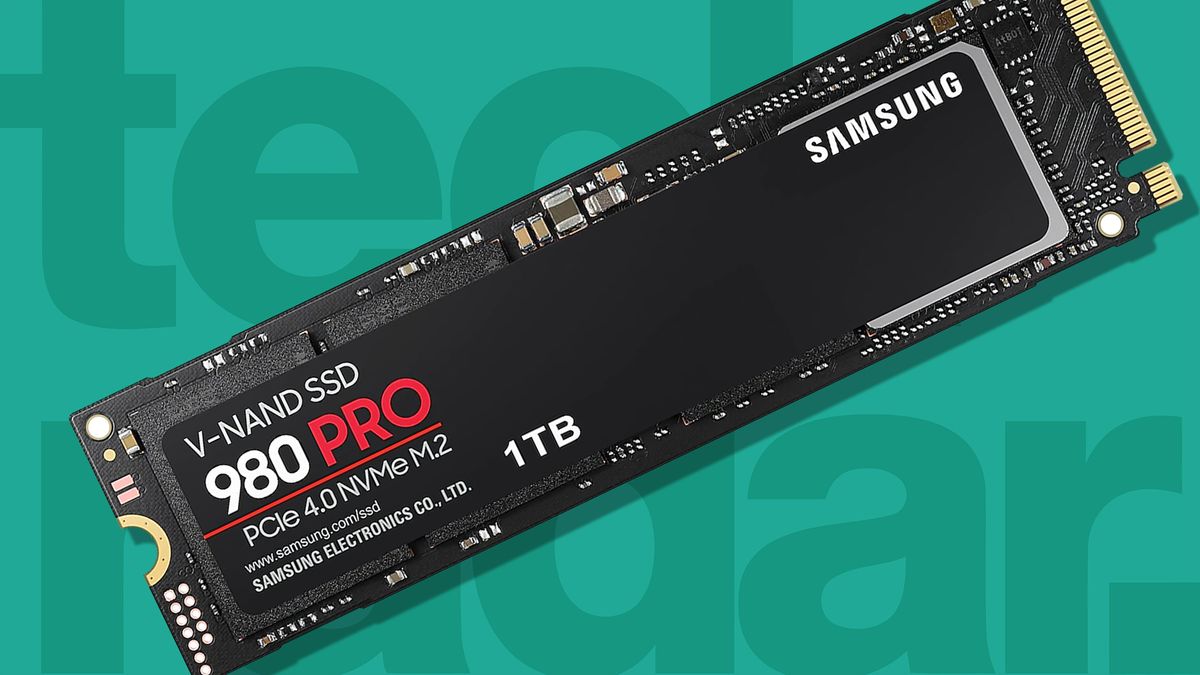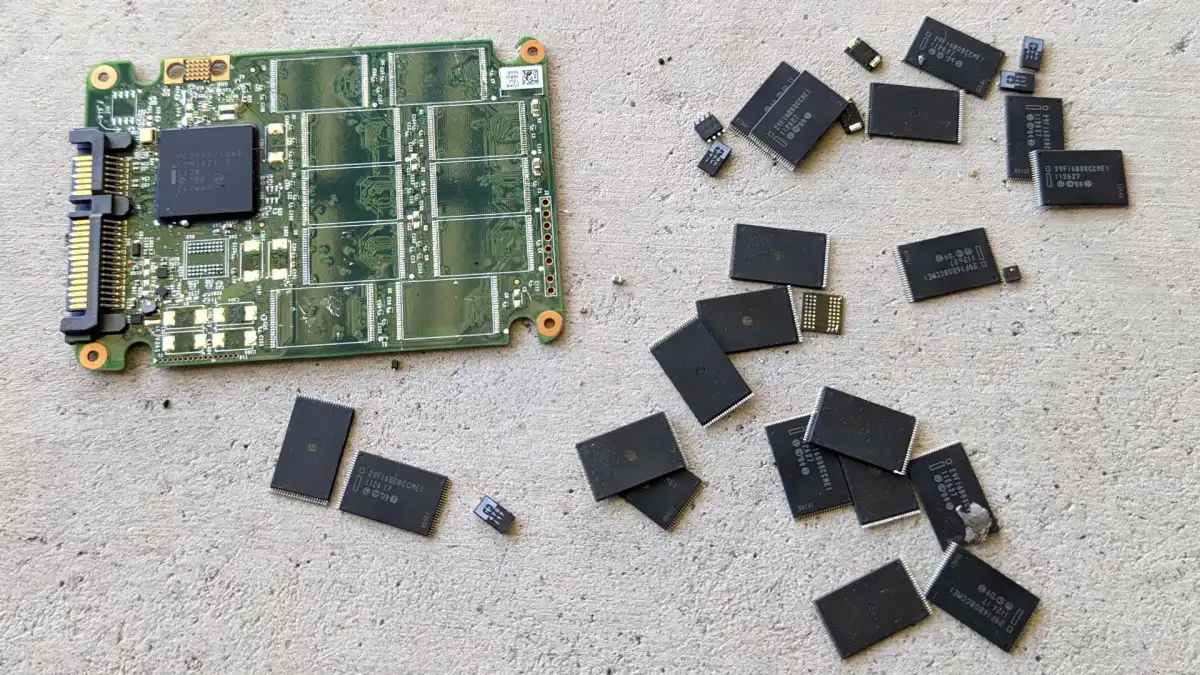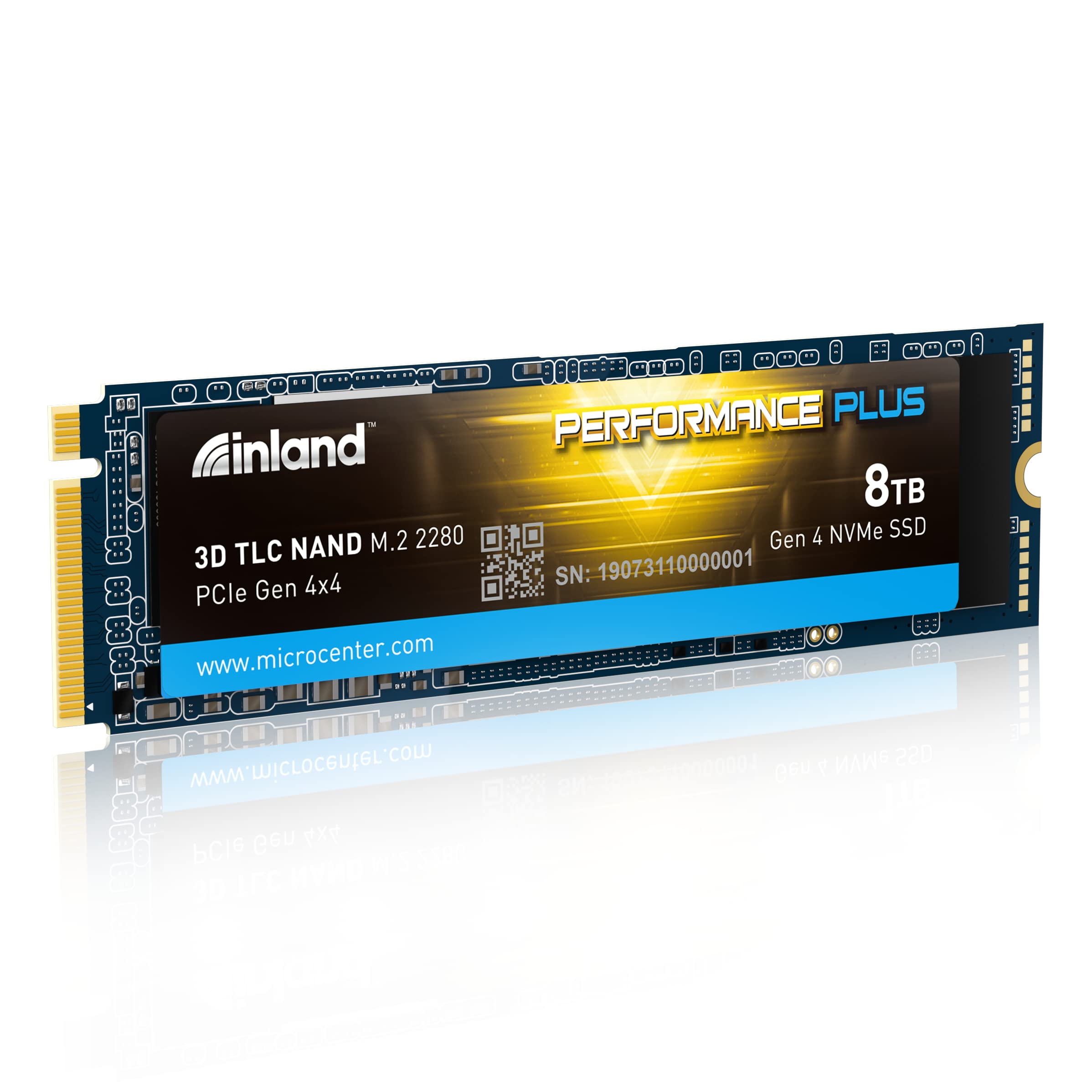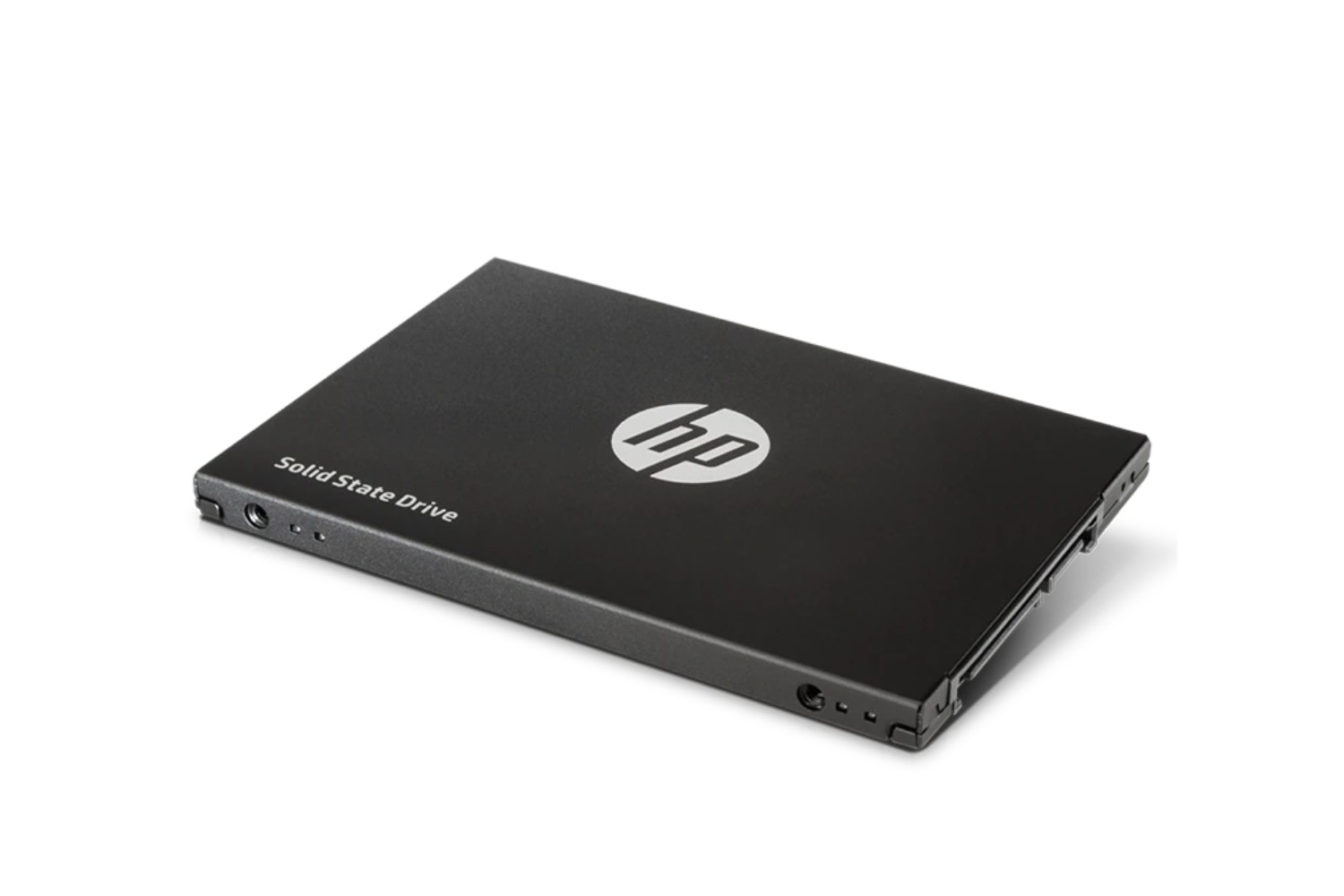Introduction
Welcome to the world of SATA SED solid-state drives (SSDs)! If you are looking to upgrade your storage solution or curious about the latest technology in data storage, you’ve come to the right place. In this article, we will delve into what exactly a SATA SED SSD is and explore its features and benefits.
SATA SED SSDs are the cutting-edge devices that combine the speed and reliability of solid-state drives with the added security and encryption features that make them ideal for businesses and individuals who prioritize data protection. By understanding how these drives work and the advantages they offer, you can make an informed decision when it comes to choosing the right storage solution for your needs.
Throughout this article, we will explore the key aspects of SATA SED SSDs, including their functionality, security features, use cases, and how to select the best one for your requirements. Whether you are a tech enthusiast, a business owner, or simply someone who values safeguarding their data, this guide will equip you with the knowledge necessary to make an informed decision.
So, let’s dive in and explore the world of SATA SED SSDs in detail.
Overview of SATA SED Solid State Drive
A SATA SED solid-state drive (SSD) is a high-performance storage device that utilizes flash memory technology to store and retrieve data. It connects to a computer or other compatible device using the Serial ATA (SATA) interface, which ensures fast and reliable data transfer rates. What sets a SATA SED SSD apart from traditional hard disk drives (HDDs) is its advanced security features, making it an excellent choice for individuals and organizations concerned about data privacy.
SATA SED SSDs are designed to provide exceptional speed and efficiency. By using flash memory rather than mechanical components, they deliver faster boot times, reduced application load times, and improved overall system responsiveness. This makes them ideal for tasks that require quick data access, such as gaming, multimedia editing, and data-intensive applications.
The SED (Self-Encrypting Drive) aspect of the SATA SED SSD refers to its encryption capabilities. These drives feature built-in encryption technology, which encrypts data stored on the drive automatically. This ensures that even if the drive is lost, stolen, or accessed by unauthorized parties, the encrypted data remains protected and inaccessible. The encryption process is transparent to the user and does not impact performance.
Furthermore, SATA SED SSDs often come with additional security features, such as secure erase, which securely erases the data on the drive, rendering it irretrievable. They may also support pre-boot authentication, where users are required to enter a password or encryption key before the system boots up. These features provide an extra layer of security, mitigating the risk of unauthorized access to sensitive information.
Overall, SATA SED SSDs offer a compelling combination of speed, reliability, and security. They are suitable for a wide range of applications, from personal computing to enterprise-level data storage. Whether you are a professional running resource-intensive software or an individual looking for a secure and efficient storage solution, a SATA SED SSD can meet your needs.
How Does a SATA SED Solid State Drive Work?
To understand how a SATA SED solid-state drive (SSD) works, it’s important to grasp the underlying technology behind it. Unlike traditional hard disk drives (HDDs) that rely on spinning magnetic disks and mechanical read/write heads, SSDs use flash memory chips to store and retrieve data. This key distinction allows SSDs to offer significant performance advantages over HDDs.
Inside a SATA SED SSD, you’ll find NAND flash memory chips organized into memory cells. Each memory cell can store multiple bits of data, depending on the specific type of flash memory technology used (such as Single-Level Cell or Multi-Level Cell). These memory cells are arranged in blocks, and each block is composed of several pages that can be written or read independently.
When data needs to be written, the controller in the SSD manages the process. The controller receives the data from the computer’s operating system and converts it into voltages that represent binary digits (bits) to be stored in the memory cells. It then programs the flash memory cells by applying the correct voltage levels. The writing process can be performed on multiple pages simultaneously, known as parallel programming, to improve efficiency.
Reading data from an SSD involves a similar process. The controller retrieves the requested data from the flash memory cells by measuring the electrical charges stored in the memory cells and converting them into digital information that can be understood by the computer’s operating system. The read process can also be done in parallel across multiple pages to enhance speed.
One of the key advantages of SSDs, including SATA SED SSDs, is their lack of mechanical components. Unlike HDDs, SSDs do not require spinning disks or moving read/write heads. This results in faster access times, near-instantaneous data retrieval, and lower risk of mechanical failure. The absence of moving parts also contributes to their silent operation and reduced power consumption.
The “SED” aspect of a SATA SED SSD refers to the self-encrypting drive functionality. When data is written to an SED SSD, it is automatically encrypted by the drive’s hardware-based encryption engine. This encryption occurs in real-time, transparent to the user, and does not impact performance. The encryption key is securely generated and stored within the drive, ensuring that even if the SSD is removed from the system, the data remains protected.
Overall, a SATA SED SSD works by leveraging flash memory technology, controller electronics, and built-in encryption features to deliver fast, reliable, and secure data storage and retrieval. Its solid-state design and advanced encryption make it an appealing choice for those seeking both performance and data protection.
Benefits of Using a SATA SED Solid State Drive
Using a SATA SED solid-state drive (SSD) offers several significant benefits compared to traditional hard disk drives (HDDs) and even other types of SSDs. Let’s take a closer look at some of the key advantages of using a SATA SED SSD:
- Enhanced Performance: SATA SED SSDs are known for their exceptional speed and responsiveness. With significantly faster boot times, quicker application launches, and reduced data transfer latency, tasks that require intensive read/write operations become much smoother and more efficient. Whether you’re running resource-intensive software, editing multimedia files, or playing the latest games, a SATA SED SSD can significantly enhance your overall computing experience.
- Improved Reliability: Since SATA SED SSDs do not have any mechanical components like spinning disks or moving read/write heads, they are inherently more reliable and durable than HDDs. Without these vulnerable parts, there is a reduced risk of mechanical failure, which means that your data is less likely to be lost due to a sudden hardware malfunction. This makes SATA SED SSDs an ideal choice for storing important files and valuable data.
- Increased Energy Efficiency: SATA SED SSDs consume less power than HDDs, making them more energy-efficient and helping to extend the battery life of laptops and other portable devices. The absence of mechanical parts also contributes to the SSD’s lower power requirements. By using a SATA SED SSD, you can enjoy longer battery life and reduce your overall energy consumption, benefiting both the environment and your wallet.
- Enhanced Data Security: One of the standout features of SATA SED SSDs is their built-in hardware-based encryption capabilities. These drives automatically encrypt the data stored on them, ensuring that even if the drive is lost, stolen, or accessed by unauthorized individuals, the data remains protected and unreadable. This level of data security is crucial for individuals and businesses that handle sensitive information and want to safeguard it from potential breaches or unauthorized access.
- Faster Data Access: Due to their flash memory technology, SATA SED SSDs deliver faster data access compared to HDDs. This means that retrieving and transferring files, launching applications, and performing other data-intensive tasks can be accomplished in a fraction of the time it would take with a traditional HDD. This increased speed and efficiency contribute to a more seamless and productive computing experience.
Overall, using a SATA SED SSD not only boosts the performance and reliability of your storage solution but also provides enhanced energy efficiency and data security. If you’re looking for a storage device that offers lightning-fast speed, peace of mind, and improved overall efficiency, a SATA SED SSD is an excellent choice.
Security Features of SATA SED Solid State Drive
One of the standout characteristics of a SATA SED solid-state drive (SSD) is its advanced security features. These drives incorporate hardware-based encryption and other security measures to protect the data stored on them. Let’s explore some of the key security features of SATA SED SSDs:
- Hardware-Based Encryption: SATA SED SSDs employ built-in hardware encryption engines to automatically encrypt the data written to the drive. This encryption occurs in real-time, transparent to the user, and does not impact performance. The encryption keys are generated and securely stored within the drive itself, ensuring that even if the SSD is removed from the system, the data remains protected and unreadable. Hardware-based encryption adds an extra layer of security to safeguard sensitive information.
- Secure Erase Functionality: SATA SED SSDs often include a secure erase feature that allows users to securely wipe the entire drive, rendering the data irretrievable. This is crucial in situations where the drive needs to be decommissioned, recycled, or repurposed. The secure erase function ensures that no traces of sensitive data remain on the drive, protecting against data breaches and unauthorized access.
- Pre-Boot Authentication: Some SATA SED SSDs support pre-boot authentication, where users are required to provide a password or encryption key before the system boots up. This ensures that only authorized individuals have access to the data stored on the drive. Pre-boot authentication adds an additional layer of protection against unauthorized access, even if the system falls into the wrong hands.
- Opal 2.0 Compliance: Many SATA SED SSDs adhere to the Opal 2.0 standard, which is a set of specifications for self-encrypting drives (SEDs). Opal 2.0 compliance ensures compatibility and interoperability with various systems and applications that support SED functionality.
- Data-at-Rest Protection: SATA SED SSDs provide data-at-rest protection, meaning that the data stored on the drive is encrypted and secure when the drive is powered off or not in use. This prevents unauthorized access to the data in case the drive is lost, stolen, or removed from the system. Data-at-rest protection is a critical security feature for individuals and organizations that handle sensitive information.
The combination of hardware-based encryption, secure erase functionality, pre-boot authentication, Opal 2.0 compliance, and data-at-rest protection make SATA SED SSDs an incredibly secure storage solution. Whether you are an individual looking to protect personal data or a business seeking to secure sensitive information, a SATA SED SSD provides peace of mind and ensures that your data remains confidential and protected from unauthorized access.
Use Cases and Industries for SATA SED Solid State Drive
The advanced security and high-performance features of SATA SED solid-state drives (SSDs) make them suitable for various use cases across different industries. Let’s explore some of the key applications and industries where SATA SED SSDs excel:
- Government and Defense: The government and defense sectors handle highly sensitive and confidential information that requires utmost security. SATA SED SSDs are well-suited for storing classified data, securing communications, and protecting sensitive military information. The hardware-based encryption and tamper-proof features of SATA SED SSDs make them an ideal choice for these industries.
- Healthcare: In the healthcare industry, patient data security and privacy are paramount. SATA SED SSDs provide the necessary protection for electronic health records (EHRs), patient histories, and medical imaging data. With the built-in hardware encryption and secure erase functionality, SATA SED SSDs ensure compliance with data privacy regulations, such as the Health Insurance Portability and Accountability Act (HIPAA).
- Financial Services: Banks, financial institutions, and investment firms handle huge volumes of sensitive financial data. SATA SED SSDs offer the necessary security measures to protect customer financial information, transaction records, and confidential business data. The encryption and authentication features of SATA SED SSDs help prevent unauthorized access and data breaches in this industry.
- Legal and Law Enforcement: Legal professionals and law enforcement agencies deal with sensitive case files, legal documents, and evidence. SATA SED SSDs provide a secure storage solution, ensuring that confidential information remains protected. The pre-boot authentication feature adds an extra layer of security, ensuring that only authorized personnel can access the data stored on the drive.
- Enterprise and Corporate: Companies across various sectors can benefit from SATA SED SSDs to secure their valuable business data. Whether it’s internal documents, financial records, customer information, or intellectual property, SATA SED SSDs provide a reliable and secure storage solution. They are especially useful for employees who frequently work remotely or travel, as the data remains encrypted and protected even if the drive is lost or stolen.
These are just a few examples of the many use cases and industries where SATA SED SSDs find application. From government agencies and healthcare providers to financial institutions and corporate enterprises, the advanced security features and high-performance capabilities of SATA SED SSDs make them a versatile and dependable storage solution across various sectors.
Choosing the Right SATA SED Solid State Drive
When it comes to choosing the right SATA SED solid-state drive (SSD) for your needs, several factors need to be considered. Here are some key aspects to keep in mind when selecting a SATA SED SSD:
- Storage Capacity: Determine the amount of storage capacity you require based on your data storage needs. SATA SED SSDs are available in a range of capacities, from a few hundred gigabytes to multiple terabytes. Consider the types of files you will be storing and the space required for your operating system and applications.
- Performance: Assess the performance requirements of your intended use. Consider factors such as read and write speeds, random access speeds, and input/output operations per second (IOPS). SATA SED SSDs typically offer high-performance capabilities, but it’s still worth comparing specifications to ensure they meet your specific needs.
- Reliability and Durability: Look for SATA SED SSDs from reputable manufacturers known for producing reliable and durable drives. Read user reviews and check the drive’s warranty period to gauge its reliability. SSDs with features like power loss protection and error correction mechanisms provide additional safeguards against data loss.
- Security Features: SATA SED SSDs offer various levels of security features. Consider the encryption algorithms supported, the strength of the encryption, and the compatibility with industry standards such as Opal 2.0. Look for additional security measures like secure erase functionality and pre-boot authentication if these features are important to you.
- Compatibility: Ensure that the SATA SED SSD you choose is compatible with your system. Check the physical connector type (e.g., SATA 6Gb/s) and the form factor (e.g., 2.5-inch or M.2) to ensure it will fit your system’s drive bay or slot. Confirm that your system’s BIOS or firmware supports SED functionality for seamless integration.
- Price: Consider your budget when selecting a SATA SED SSD. Prices can vary depending on capacity, performance, and brand. It’s important to balance your storage needs and performance requirements with your budget constraints to find the best value for your investment.
By assessing your storage needs, performance requirements, security considerations, compatibility, and budget, you can make an informed decision and choose the right SATA SED SSD for your specific needs. Keep in mind that it’s always a good idea to do additional research, read reviews, and consult with experts or trusted sources to ensure you make the best choice.
Frequently Asked Questions about SATA SED Solid State Drive
Here are some common questions and answers regarding SATA SED solid-state drives (SSDs) to help you better understand this technology:
- What is a SATA SED SSD?
A SATA SED SSD is a type of solid-state drive that combines the performance benefits of SSDs with advanced security features. It utilizes flash memory to store data and features hardware-based encryption to protect the data stored on the drive. - How does a SATA SED SSD differ from a regular SSD?
A SATA SED SSD differs from a regular SSD in terms of its built-in hardware-based encryption functionality. This feature automatically encrypts the data written to the drive, providing an extra layer of security. - What are the benefits of using a SATA SED SSD?
SATA SED SSDs offer enhanced performance, improved reliability, increased energy efficiency, and advanced data security. They provide faster data access, better system responsiveness, and protection against unauthorized access and data breaches. - Are SATA SED SSDs compatible with all systems?
SATA SED SSDs are compatible with systems that support the SATA interface. However, it’s important to check the system’s BIOS or firmware for compatibility with self-encrypting drives (SED) functionality. - Can I use a SATA SED SSD as an external storage device?
Yes, you can use a SATA SED SSD as an external storage device by connecting it to your computer via a SATA-to-USB adapter or an external enclosure with a SATA interface. - Do SATA SED SSDs require any special software or drivers?
No, SATA SED SSDs do not typically require any special software or drivers. They are recognized by the operating system as regular storage drives. However, if you wish to enable and configure additional security features, you may need to install specific software provided by the drive manufacturer. - Can I use a SATA SED SSD in conjunction with software-based encryption?
While it’s technically possible to use software-based encryption in conjunction with a SATA SED SSD, it is not recommended. Doing so may cause performance degradation, as both hardware and software encryption processes would occur simultaneously. - Are SATA SED SSDs more expensive than regular SSDs?
SATA SED SSDs may be slightly more expensive than regular SSDs due to the additional hardware-based encryption and security features they offer. However, prices have been continually decreasing, and the price difference is becoming less significant. - Can I upgrade from a regular SSD to a SATA SED SSD?
Yes, you can upgrade from a regular SSD to a SATA SED SSD by replacing the existing SSD with the new SATA SED SSD. However, it’s essential to backup your data before making any changes to avoid data loss. - Can I use a SATA SED SSD in RAID configurations?
Yes, SATA SED SSDs can be used in RAID (Redundant Array of Independent Disks) configurations for added data protection and performance benefits. Consult the manufacturer’s documentation for RAID compatibility and specific guidelines.
These frequently asked questions cover some of the key inquiries regarding SATA SED SSDs. If you have any further questions or require specific information, it’s always recommended to consult the manufacturer’s documentation or seek assistance from a knowledgeable professional.
Conclusion
SATA SED solid-state drives (SSDs) offer a powerful combination of speed, reliability, and security. With their advanced hardware-based encryption features, these drives are designed to protect your data from unauthorized access and ensure the privacy of sensitive information. SATA SED SSDs excel in various industries and use cases, ranging from government and defense sectors to healthcare, financial services, and corporate enterprises.
The benefits of using a SATA SED SSD are numerous. With faster boot times, improved system responsiveness, and reduced application load times, these drives enhance overall performance and productivity. The absence of mechanical components makes SATA SED SSDs more durable and reliable than traditional hard disk drives (HDDs), while their energy efficiency helps conserve power and prolong battery life.
Security is a priority in today’s digital world, and SATA SED SSDs address this concern with their built-in encryption and security features. Hardware-based encryption safeguards your data, ensuring that it remains protected even if the drive is lost or stolen. Additional security measures such as secure erase functionality and pre-boot authentication provide an extra layer of protection against unauthorized access.
Choosing the right SATA SED SSD involves considering factors such as storage capacity, performance, reliability, security features, compatibility, and budget. By assessing your specific needs and carefully evaluating the available options, you can select the best SATA SED SSD that matches your requirements.
In conclusion, SATA SED SSDs provide an ideal storage solution for individuals and organizations that require both high-performance and data security. With their advanced encryption capabilities, seamless integration, and impressive efficiency, SATA SED SSDs offer peace of mind and ensure that your data remains confidential and protected. Upgrade to a SATA SED SSD today and experience the benefits of speed, reliability, and enhanced security in your computing endeavors.









